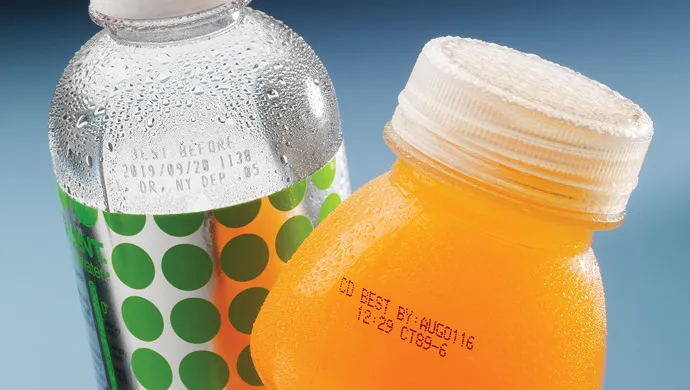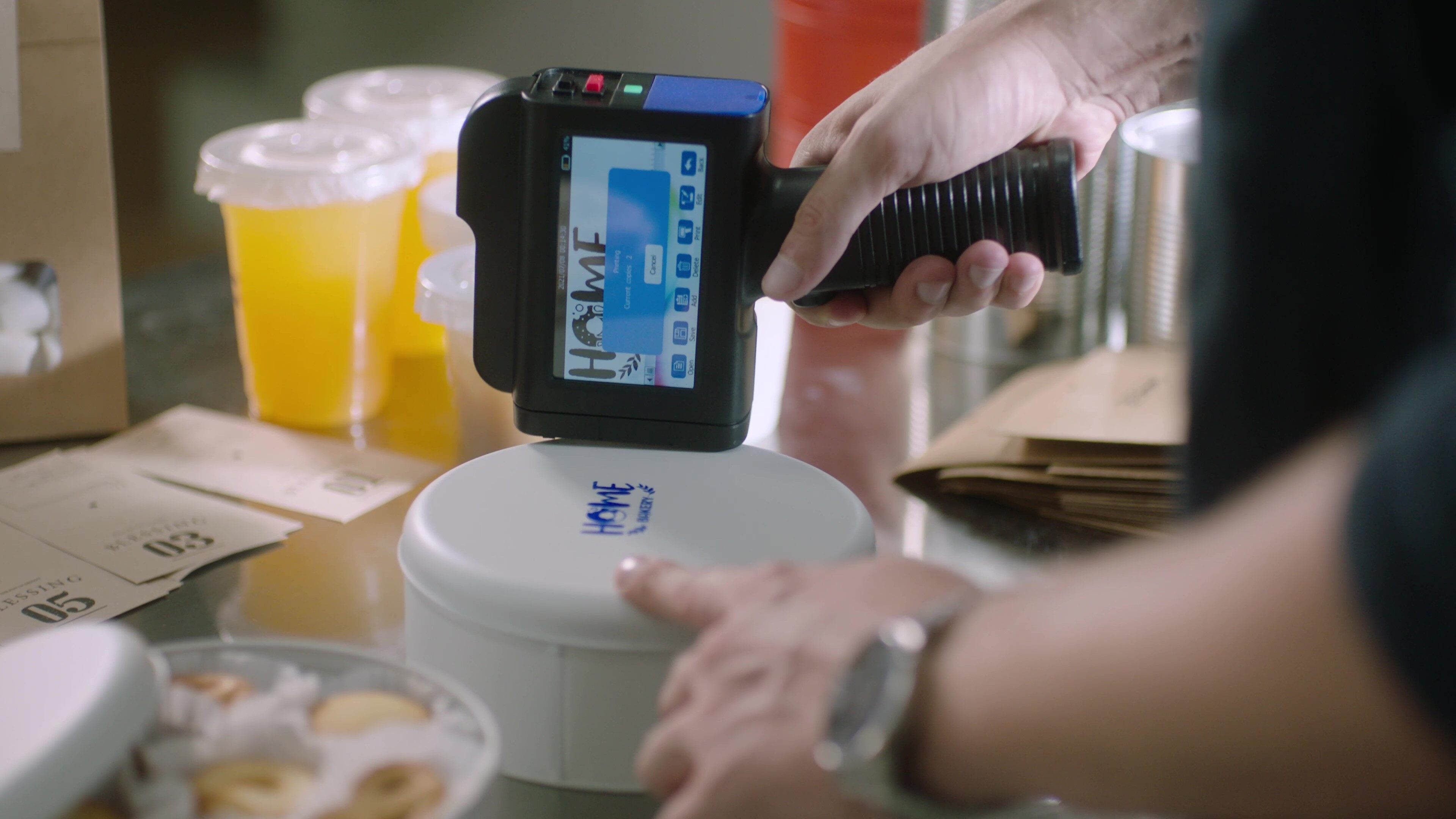Which type of inkjet printer is the best for food packing industry?
When it comes to food packaging, the intricacies go beyond mere containment. Safety standards demand rigorous adherence, and durability against environmental factors like temperature shifts and moisture becomes imperative. Therefore, selecting the right inkjet printer for food packaging is crucial in maintaining efficiency, compliance, and quality. In this article, we explore the different types of inkjet printers, looking at their features and hopefully give you a clear overview of which type of printer is best suited for the food packaging sector.
Understanding the Needs of Food Packaging
Food packaging differs significantly from other types. It requires adherence to safety standards, clear legibility, and durability against various conditions like moisture and temperature changes. The right printer not only meets these requirements but also maintains efficiency and cost-effectiveness.
What Type of Inkjet Printers Can be Used for Food Packaging?
1. CIJ (Continuous Inkjet) Printers:
- Best for High-Speed Printing: CIJ printers are renowned for their high-speed capabilities, making them suitable for large-scale food packaging operations. Their efficiency is unmatched, ensuring streamlined processes.
- Non-contact Printing: Essential for delicate packaging materials often used in the food industry.
- Versatile Ink Types: Offers a range of inks, including food-safe inks, crucial for the unique demands of direct printing on consumables.
2. TIJ (Thermal Inkjet) Printers:
- High-Resolution Printing: TIJ printers provide high-resolution prints, ensuring clarity and legibility, which is essential for expiration dates and nutritional information.
- Low Maintenance: Unlike CIJ printers, TIJ printers require less maintenance, presenting a cost-effective alternative without compromising quality.
- Eco-Friendly: Typically uses fewer volatile organic compounds (VOCs), aligning with environmental standards.
3. Handheld Inkjet Printers:
- Portability Redefined: Among their array of advantages, handheld inkjet printers redefine convenience with their portable nature. This feature makes them not only ideal for diverse operations but also exceptionally adaptable for on-the-go printing requirements.
- Cost-Effective for Diverse Operations: Especially beneficial for small to medium-sized businesses, handheld TIJ printers offer a cost-effective solution without the need for larger, more expensive setups.
- Customizable Printing: Can easily adapt to various packaging designs and materials, such as printing QR codes, batch numbers, expiry dates, logos on packaging boxes, bags, or cans.
- High-Resolution and Legibility: For printing crucial information like expiration dates and batch numbers, the clarity offered by handheld TIJ printers is unmatched. Brands like Bentsai ensure that each print is crisp and legible, a non-negotiable in food packaging.
4. DOD (Drop on Demand) Printers:
- Great for Specific Printing Needs: Suitable for larger, more defined print requirements on packaging.
- Flexibility in Printing: Offers flexibility with substrates and ink types, including UV-curable inks for durability.
How to Choose a Suitable Inkjet Printer for Food Packaging?
Choosing a suitable inkjet printer for food packaging involves several considerations to ensure that you get the right printer for your specific needs. Here’s a comprehensive guide on what to look for:
- Food-Safe Inks: The most critical factor is the type of ink the printer uses. Ensure the inkjet printer is compatible with food-safe inks that are FDA-approved for direct or indirect contact with food. These inks should not contain any toxic materials and should be resistant to fading when in contact with food or liquids.
- Print Quality and Resolution: High print quality is essential for food packaging as it needs to be attractive and legible. Look for printers that offer high resolution and can produce clear, vibrant images and texts. The standard is typically around 300dpi, 600dpi, 1200dpi (dots per inch) or higher.
- Speed and Efficiency: Consider the printing speed, especially if you need to handle high-volume printing tasks. Efficient printers can handle continuous printing without frequent stops, which is crucial in commercial settings.
- Durability and Maintenance: The printer should be durable and easy to maintain, especially in environments where cleanliness and hygiene are paramount. Look for printers with stainless steel housings or those designed specifically for harsh industrial environments.
- Versatility in Substrates: The ability to print on various substrates used in food packaging, such as films, foils, plastics, and paper, is important. Check whether the printer supports the specific materials you plan to use. Handheld inkjet printers stand out in this regard.
- Ease of Use: Look for features that enhance usability, such as touchscreen interfaces, easy setup processes, and straightforward maintenance routines. These features can significantly reduce downtime and increase productivity.
- Connectivity and Integration: The printer should be able to integrate seamlessly with your existing production line and IT systems. Features like Ethernet and Wi-Fi connectivity, as well as compatibility with current software systems, are beneficial.
- Cost-effectiveness: Evaluate the total cost of ownership, which includes the initial purchase price, the cost of inks, maintenance costs, and any potential downtime costs. Energy-efficient models might also help reduce operating costs.
- After-Sales Support and Warranty: Good customer support can be invaluable, particularly for troubleshooting and when you need repairs. A robust warranty can also provide peace of mind.
- Environmental and Safety Features: Additional features such as automatic shutdown, low emission levels, and recyclability of components can also be important, especially in keeping with environmental and safety regulations.
When selecting a printer, it's often beneficial to request demos or samples to see the printer's output quality and evaluate its compatibility with your packaging needs. Additionally, consulting with industry experts or suppliers can provide insights tailored to your specific requirements.

Conclusion
In conclusion, the selection of an inkjet printer for food packaging is not just a matter of technological preference but a critical business decision that impacts compliance, efficiency, and the overall presentation of products. As explored in this article, whether you opt for CIJ, TIJ, handheld, or DOD printers, each type comes with its own set of features tailored to different needs within the food packaging sector.
The choice should be influenced by considerations of print quality, operational speed, maintenance needs, and importantly, the safety of the inks used. By understanding the unique demands of food packaging and carefully assessing the printers' capabilities against these needs, businesses can make informed decisions that ensure not only regulatory compliance but also operational excellence and cost-effectiveness. Always remember, the right printer can significantly enhance your product's marketability by improving the quality and reliability of packaging, which in turn fosters consumer trust and satisfaction.
Ask Question
No questions and answers


